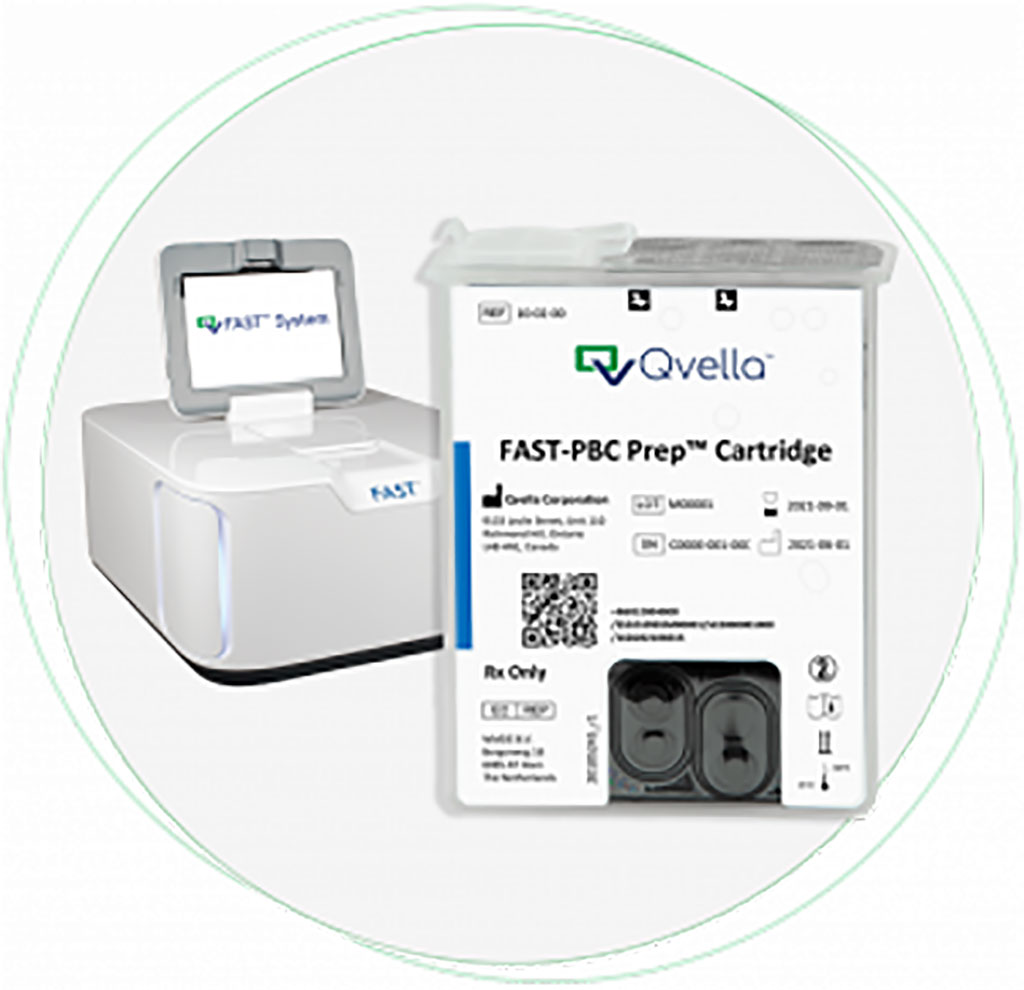Positive Blood Culture Processing Technology Accelerates Infection Identification and AST
Posted on 26 Apr 2022
Sepsis is the most deadly and costly hospital condition to treat. 80% of sepsis deaths could be prevented with rapid diagnosis and treatment, although diagnosis today is a multi-step process that takes 1 to 5 days to pathogen ID and appropriate or optimal antimicrobial therapy. Moreover, 30%-45% of sepsis patients receive inappropriate initial antimicrobial therapy and every hour delay of appropriate antimicrobial treatment increases morbidity and mortality associated with sepsis. Now, a new system has the potential to expedite ID and AST for blood-borne pathogens from positive blood cultures.
Qvella’s (Richmond Hill, ON, Canada) AST System and FAST-PBC Prep Cartridge product for Positive Blood Culture (PBC) processing uses its patented FAST-Technology (Field Activated Sample Treatment) to eliminate the need for time-consuming culture methods. This allows the processing of downstream applications up to 24 hours faster than current methods so lifesaving treatment, for example, could be started much more quickly than ever before. This disruptive technology can change outcomes for patients, while simultaneously saving money for healthcare providers.

The FAST System isolates and concentrates pathogens to generate a Liquid Colony (LC) which can be readily used to set up for a variety of downstream workflows, including ID by MALDI-TOF, and AST by automated systems such as BD Phoenix, bioMérieux VITEK2, Beckman Coulter MicroScan WalkAway, Disc Diffusion, and others. The resulting LC very closely match the standard of care. The LC can be generated immediately after obtaining a PBC, potentially saving 24 hours or more in diagnosis of infections.
Recent beta trials of Qvella’s FAST System and FAST-PBC Prep Cartridge have shown that Qvella’s technology easily integrates with existing workflows, and the fully automated solution requires a minimal hands-on time of approximately two minutes. Qvella has announced the commercialization of its FAST System and FAST-PBC Prep Cartridge product for PBC processing. The products have received CE marking for in vitro diagnostic (IVD) use in Europe and are now listed as Class I IVD devices with the FDA for the U.S. market.
“With several performance evaluation studies completed and EU and USA marketing authorization granted, we have officially reached the commercialization milestone for our FAST System,” said Tino Alavie, president, CEO, and co-founder of Qvella. “Given the shortage of technicians that healthcare systems are seeing right now amid the COVID-19 pandemic, the timing could not be better for the commercialization of our technology. It can be used to accelerate infection identification, for example, or to accelerate antibiotic susceptibility testing, with results delivered 24 hours earlier than previously possible. It is also very cost effective compared to molecular blood culture identification panels.”
Related Links:
Qvella














